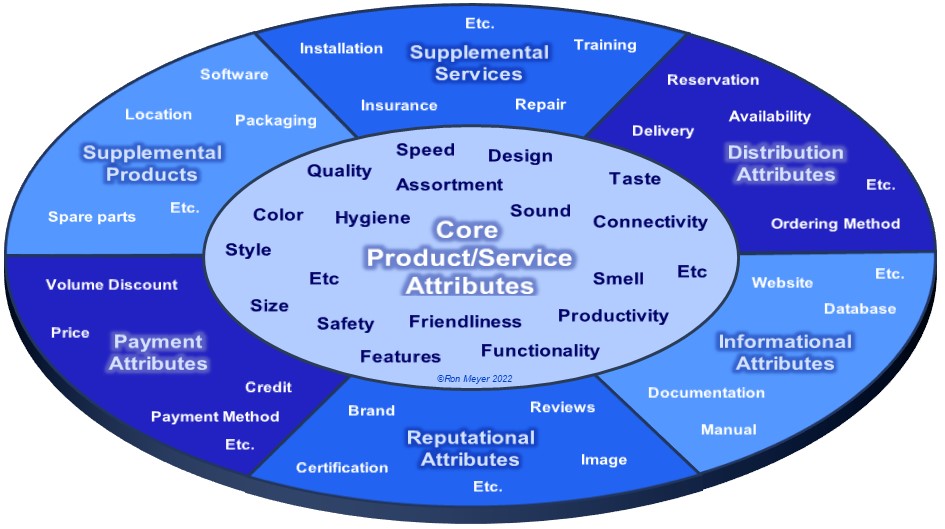A value proposition is the full package of benefits that a firm promises to potential customers if they purchase its products and/or services. It is the set of valuable attributes that a firm vows to deliver to buyers, in the hope that this will sway them to select the firm’s offering.
What is valuable is determined by the potential customer. On a hot day, cold ice cream is valued, but so is its availability at the beach, its trusted brand, and the possibility to pay by credit card. It is the set of attributes together that make a value proposition compelling.
The Value Proposition Dial gives insight into the seven categories of attributes that can be combined to create an attractive value proposition. Its key message is that a value proposition is more than the characteristics of the core product/service. Surrounding these core attributes are the envelope attributes – six sets of possible characteristics providing valuable ‘wrapping’ around the ‘gift’ inside. In each of the seven categories a few examples have been given, but there is no limit to the possible attributes per category. This “dial” is one of the three dials that together form the business system (see model 32, Strategic Alignment Model).

The seven categories of possible attributes are the following:
Almost all value propositions will have attributes in all seven categories. The challenge is to find distinctive and appreciated attributes in each and to align them into a desirable whole.